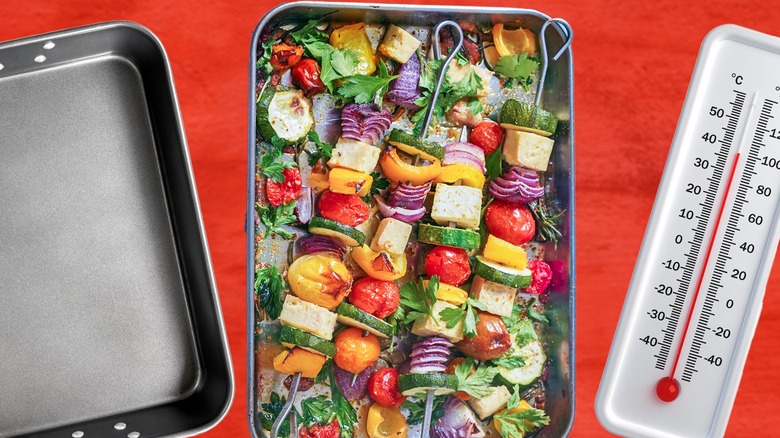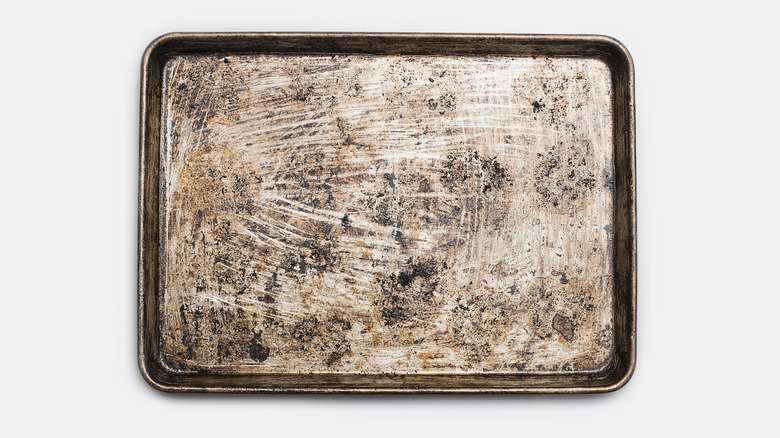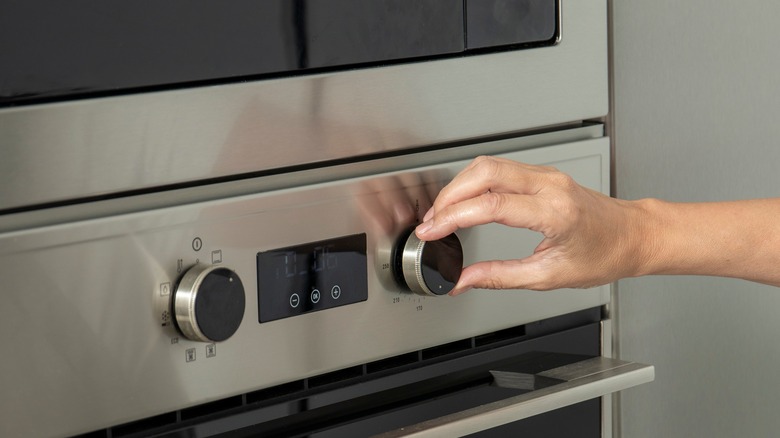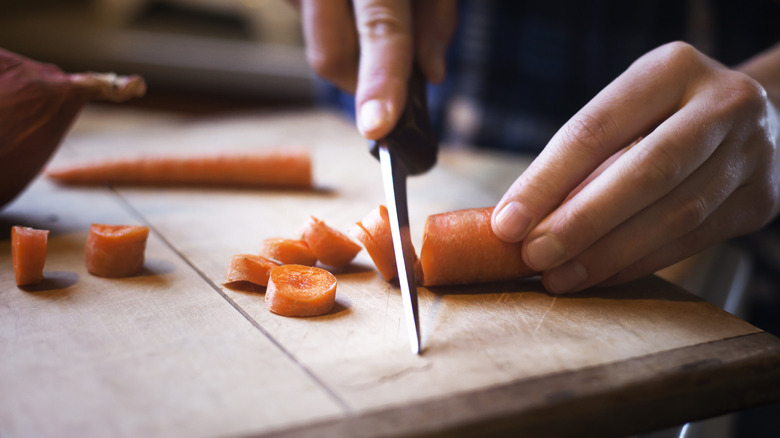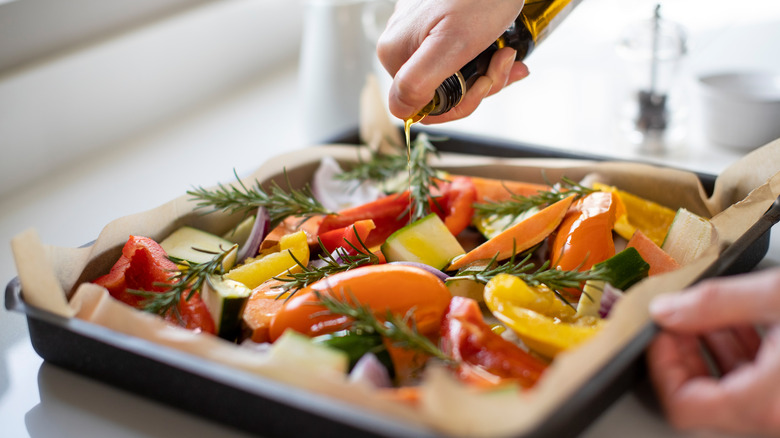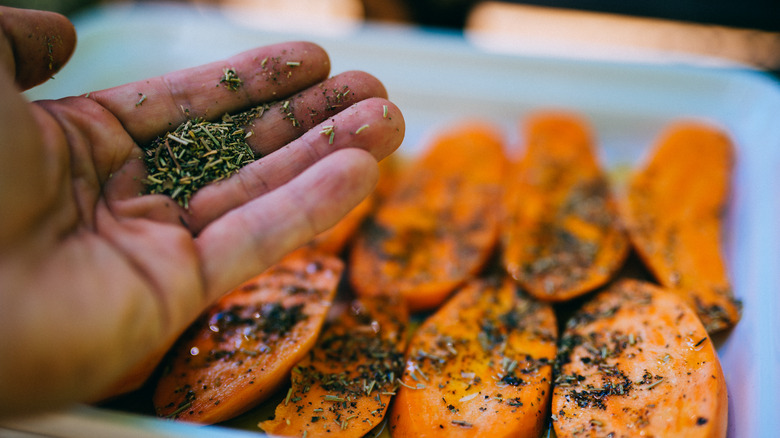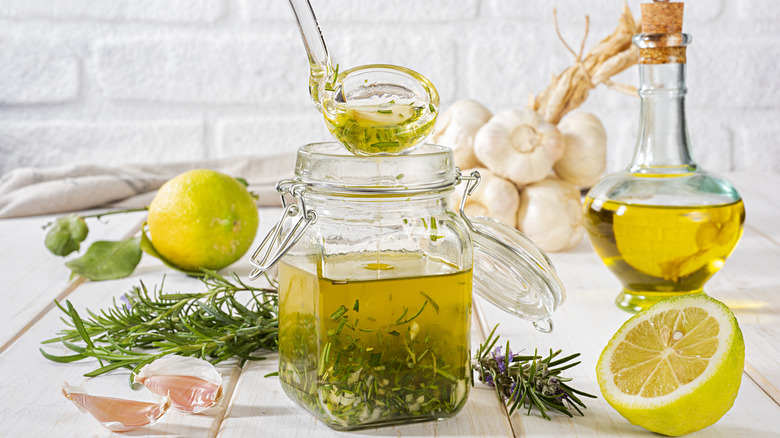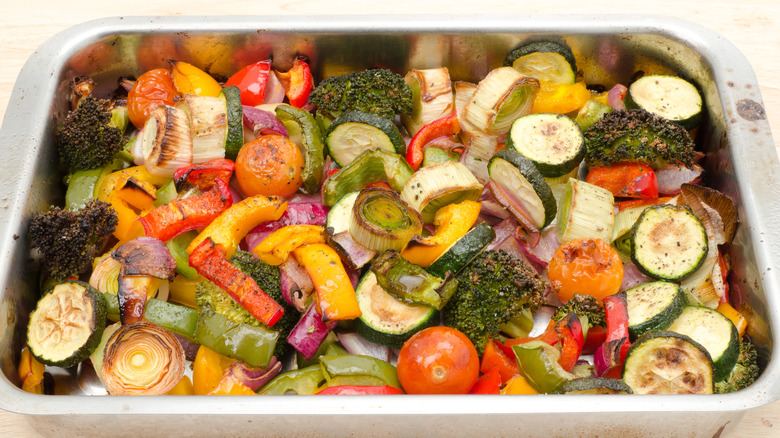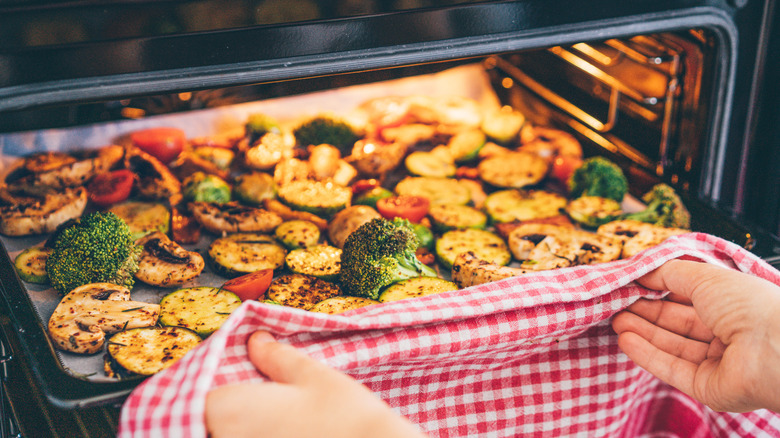8 Mistakes Everyone Makes When Roasting Vegetables
Roasting is a simple cooking technique that highlights the natural flavor and sweetness of vegetables. When done correctly, it should produce vegetables that are wonderfully crisp on the surface with fork-tender insides. It's an excellent method to elevate veggies in a way that other techniques like steaming or sautéing can't.
My first weeks of culinary school were spent honing newly learned knife skills by chopping vegetables for roasting. We roasted everything from potatoes to carrots to broccoli, and though it was all delicious, this quickly began to feel repetitive and dull. I had no idea that each batch of roasted vegetables was teaching me and my classmates the nuances of roasting that will lead to a perfect outcome each time. What seemed like an exceptionally simple task was actually a complex blend of science, timing, temperature, and more. Roasting vegetables can be simple, even for a novice chef, if you avoid these common mistakes.
Choosing the wrong pan
Choosing the best pan for roasting vegetables might seem like a no-brainer. A roasting pan may sound like the obvious choice, but it's not the best tool for this particular job. Roasting pans are typically made with sides that are inches high, which is one of the characteristics of what makes a roasting pan stand out from a regular one. This creates depth in the pan to accommodate whole chickens, turkeys, and large cuts of meat. Roasting pans are also built to hold metal racks that are used to support the meat and poultry as it cooks, keeping it from resting on the bottom of the pan.
Pans with high sides do not create an ideal scenario for roasting vegetables. The goal when roasting is to have veggies that cook up crisp on the outside with tender centers. If your pan has sides, it will trap heat within the pan, creating steam. This steam will soften your vegetables, and they won't undergo the Maillard reaction, which would cause them to brown and deepen their flavor.
Instead, for roasting vegetables properly, choose a sturdy sheet pan with a rimmed edge. The edge will catch any oil or juices, preventing them from spilling. Remember that cookie sheets are not interchangeable with baking pans. Cookie sheets have no rim, which makes it easy to slide cookies from, but this is not the best option for retaining any juices that develop when roasting vegetables.
Choosing the wrong temperature
Roasting is arguably the most delicious way to cook vegetables, because it enhances their natural flavors in a way that other cooking techniques cannot. It causes vegetables to caramelize, giving them a rich, slightly sweet flavor. The key to roasting perfect vegetables is getting the temperature right when you cook them. 350 degrees Fahrenheit might be the norm when baking, but for proper roasting you'll need to crank the temperature up at least another 50 degrees.
Roasting occurs at temperatures between 400 and 450 degrees Fahrenheit. There's much debate about the best exact temperature within that range, but this range of temperatures will produce enough heat to sweeten and crisp most veggies without drying them out. One of Ina Garten's best tips for perfect roasted veggies is to cook them at between 400 to 425 degrees Fahrenheit.
Using lower temperatures will cook your vegetables until they're soft, but you'll miss out on the browning and crispiness on the surface. On the other hand, if your temperature is too high, you run the risk of burning the exterior of the vegetables before the inside is fully cooked. Different vegetables will work better at different temperatures. Sturdy root vegetables like carrots and potatoes can withstand higher temperatures, but more delicate veggies like asparagus or bell peppers may require slightly lower heat to avoid charring.
Cutting the vegetables unevenly
Size counts when it comes to roasting vegetables. Whether you're roasting a sheet pan full of one vegetable or tossing your favorites together on a single tray, your veggies should have one thing in common — they should all be cut to about the same size.
With roasting, you don't have to cut with precision. It's not imperative that each veggie chunk is precisely the same size as the one next to it. Perfectly-formed cubes are also not required, but making sure your vegetables are cut into similarly sized pieces is imperative for roasting success.
When you place large chunks of vegetables on the same tray with pieces that are significantly smaller, two things can happen. The larger pieces will require a much longer cooking time to roast properly, and the smaller pieces will likely burn before the big vegetable chunks are done. If you remove the veggies from the oven when the tiny pieces are done, the larger pieces may be brown on the outside, but not fully cooked in the center. When your vegetables are all similar in size, they will cook in the same amount of time.
Skipping the oil
It's second nature for most cooks to reach for oil when cooking food in a pan on the stovetop. A thin layer of oil can help keep food from sticking to the pan. It can also ensure that your food browns and cooks evenly. These are also the reasons you should always use oil when roasting vegetables.
Determining how much oil you should actually use when roasting veggies can be tricky. The goal is to make sure each piece is lightly coated in oil on all sides, but be careful not to overdo it. You can have too much of a good thing.
If you add too much oil, to the extent that the veggies are floating in a pool of it, your vegetables won't crisp as they roast. They'll wind up soft and oily. You should get good results by using a tablespoon of oil for each pound of vegetables you're roasting, or a couple of tablespoons of oil for each baking sheet you fill.
Skipping herbs and spices
When it comes to seasoning vegetables for roasting, think outside your salt and pepper shaker for maximum flavor. While salt and pepper should be a frequently used part of your pantry's repertoire, there are many herbs and spices, dried and fresh, that provide ways to add more flavor to roasted vegetables. Most veggies contain natural sugars that enhance their flavor when they're roasted, but your spice rack offers even more tasty options that will help you build layers of flavor.
You can use both fresh and dried herbs on your vegetables, but it's key that you add them in the right order for best results. You can put fresh herbs like thyme, sage, basil, and parsley on roasted vegetables, but proceed with caution.
Fresh herbs can burn easily when exposed to the high temperatures associated with roasting, so add them to your vegetables after they're fully roasted and still hot from the oven. On the other hand, add dried seasonings before you cook your vegetables. They won't burn as they roast, and their flavors get stronger when exposed to heat.
Not using vinaigrettes to season the vegetables
Delicious food is all about creating balanced flavors. The perfect bite is a delectable blend of all five tastes — sweet, sour, salty, bitter, and umami, with the latter taste providing a savory sensation. When vegetables are roasted well, they are a tasty combination of sweet and savory. You can rely on the ingredients you add to your vegetables to fill in the flavor blanks.
One surprising addition that you likely already have in your kitchen can be the game-changing ingredient for flavorful roasted vegetables. Next time you're roasting a tray of veggies, grab your favorite vinaigrette. Salads are what likely comes to mind when most people think about how to use vinaigrettes, but they are also a flavor powerhouse perfect for roasted vegetables. They often contain high-impact ingredients like herbs, spices, garlic, onion, mustard, and more that can give your roasted vegetables a full, well-rounded flavor.
Lightly coat the vegetables with your vinaigrette before roasting them for maximum flavor. Turn them frequently while cooking to prevent any sugars in the vinaigrette from burning.
Crowding the pan
Adding as many veggies to a pan as possible might seem like a good way to get a lot of food cooked quickly, but the end result will likely be a huge disappointment. Crowding your pan can lead to food that is undercooked or unevenly cooked, with an undesirable texture. If you're taking the time to roast vegetables, where the end game is veggies that are crisp-yet-tender, crowding your baking sheet is a big mistake.
In order to roast properly, vegetables should have some space in between them to allow the hot air from the oven to circulate evenly around them. This is what helps them brown and crisp on the surface. If they're too close together, you'll end up with a tray of oven-steamed veggies instead.
When you add your veggies to the pan, make sure they're in one even layer, not stacked on top of each other. You should also make sure there's plenty of room between them. Veggies that are piled on top of each other won't cook well.
Not paying attention to cooking times
One of the biggest mistakes that I've witnessed students make in more than 15 years of teaching cooking classes is popping food into the oven, setting a timer, and not checking on the food until the timer ran out. Time guidelines in recipes should be considered just that — guidelines, not hard-and-fast rules — and it's important to check your food periodically to make sure it's cooking as planned. This is particularly important when roasting vegetables, especially if you're roasting more than one type of vegetable on the same baking sheet.
Roasting all vegetables for the same amount of time can be disastrous. Different vegetables have different cooking times, so it's important to check them frequently to make sure you don't overcook or undercook them. To avoid this, you can add multiple vegetables on the same pan, but keep them separate. For example, place carrots on the right and zucchini on the left. This way, it's easy to remove the quick-cooking veggies from the tray and allow denser veggies, like carrots, to continue roasting. Another hack that will give you perfectly roasted veggies is to add the vegetables to your pan according to their cooking time, placing the longer-cooking veggies in the oven first, then adding those that require less cooking time later.
